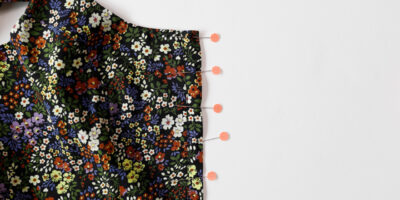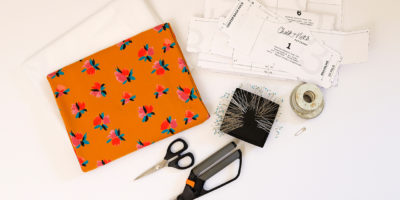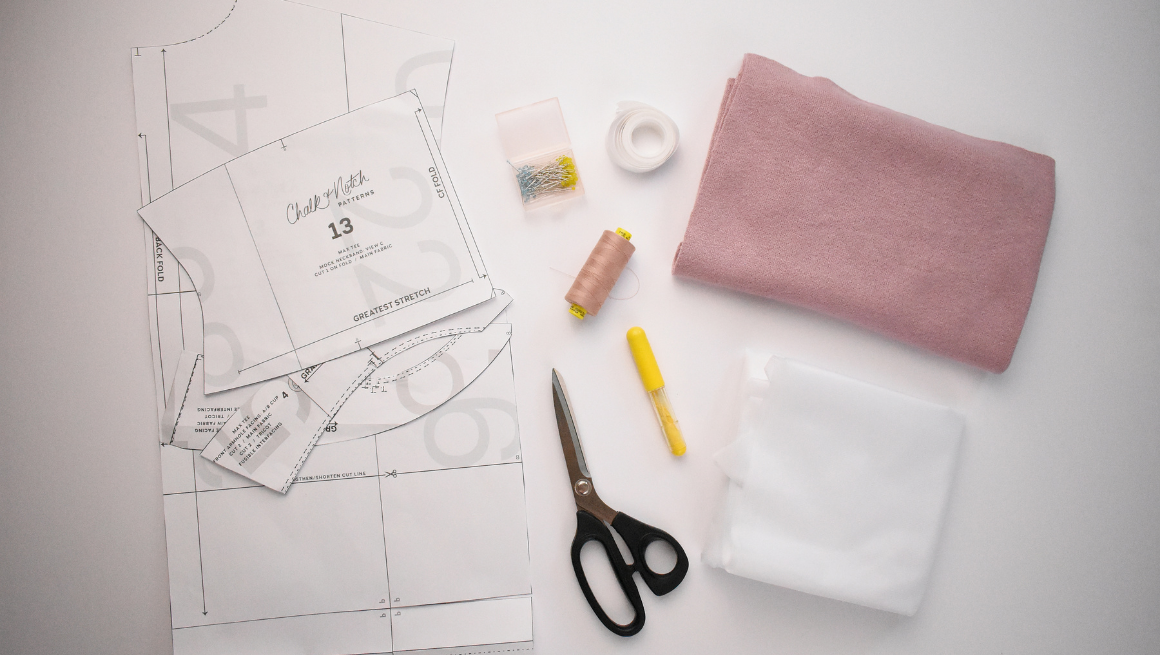
Welcome to the Max Tee Sew Along! Over the next four posts, we will be showing you how to sew this elevated, boxy tee. We will be sewing each view, demonstrating the rib-knit neckband, the mock neck, and the faced neckline and hem. We hope that this sew along will provide all of the information you need to sew this pattern. In addition to the sew along, we also have community lead sewing support in our Facebook group, or you can email directly for additional support.
GATHERING SUPPLIES
Before we begin sewing, here’s what you’ll need for your Max Tee:
- The Max Tee pdf pattern in your correct size.
- Washed and pressed knit fabric. If you’d like more inspiration and links to fabric and notions, check out our Max fabric post here.
- 1/8 yd of Rib Knit Fabric for View B.
- 3/4” (2 cm) Fusible Hem Tape for View B.
- 1/2 yd (0.5 m) Tricot Fusible Interfacing
- Tailor’s Chalk or washable fabric marker
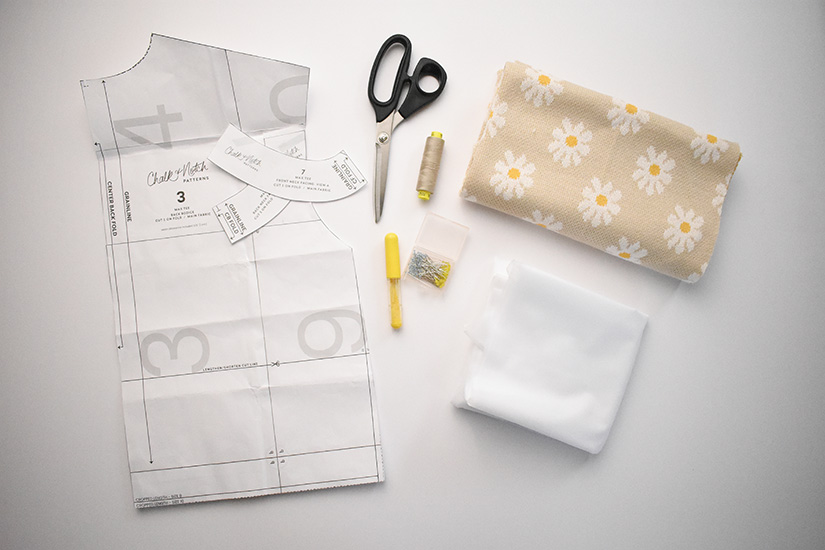
TIPS FOR CUTTING
When cutting your fabric and pattern, here are a few important notes to remember:
- Your fabric should be pre-washed the same way you plan to launder your garment.
- Read the information on each pattern piece.
- Grainlines are indicated on the pattern pieces. Place pattern pieces on the grainline, parallel to the selvage or fold.
- If the pattern says “Cut 2,” the pieces are mirror images of each other.
- If the pattern says “Cut on FOLD,” place the pattern edge exactly along the fold of the fabric.
- Clip all notches at 1/4” (0.6 cm) or less.
- Transfer all pattern markings to your fabric with a washable marker or chalk.
CUT LISTS
VIEW A TOP WITH NECK FACING
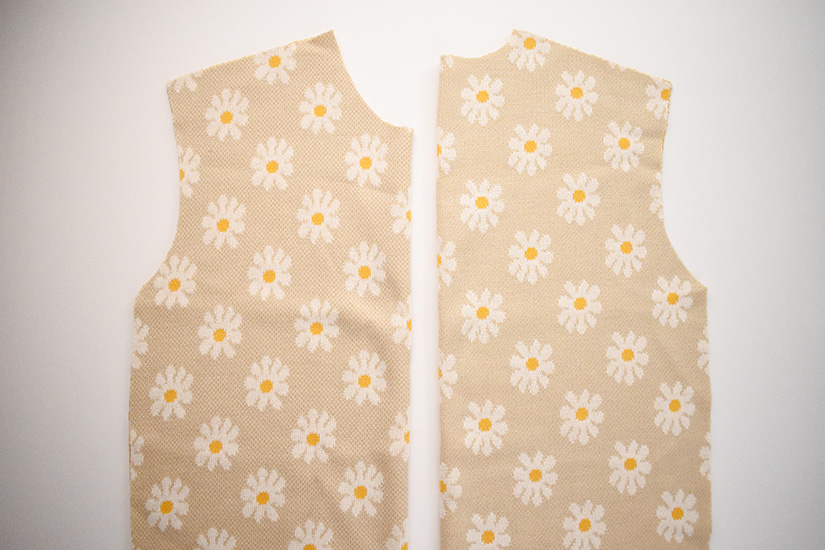
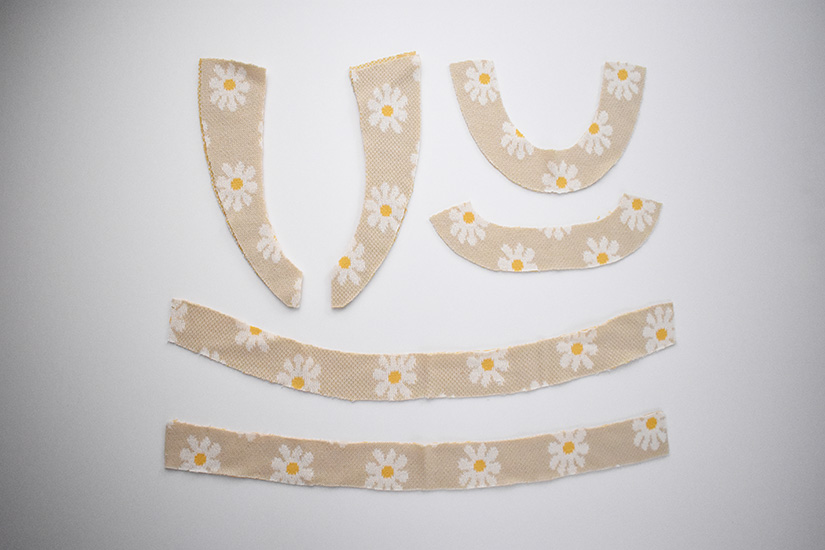
MAIN CUT LIST
- #1 OR #2 FRONT BODICE – CUT 1 ON FOLD
- #3 BACK BODICE – CUT 1 ON FOLD
- #4 OR #5 FRONT ARMHOLE FACING – CUT 2
- #6 BACK ARMHOLE FACING – CUT 2
- #7 FRONT NECK FACING – CUT 1 ON FOLD
- #8 BACK NECK FACING – CUT 1 ON FOLD
- #9 OR #10 FRONT HEM FACING – CUT 1 ON FOLD
- #11 BACK HEM FACING – CUT 1 ON FOLD
OPTIONAL FUSIBLE CUT LIST
Using Tricot Fusible Interfacing on the armhole facing pattern pieces can accentuate the shoulder shape and works best on a stable knit.
- #4 OR #5 FRONT ARMHOLE FACING – CUT 2
- 6 BACK ARMHOLE FACING – CUT 2
VIEW B CROP WITH RIB NECKBAND
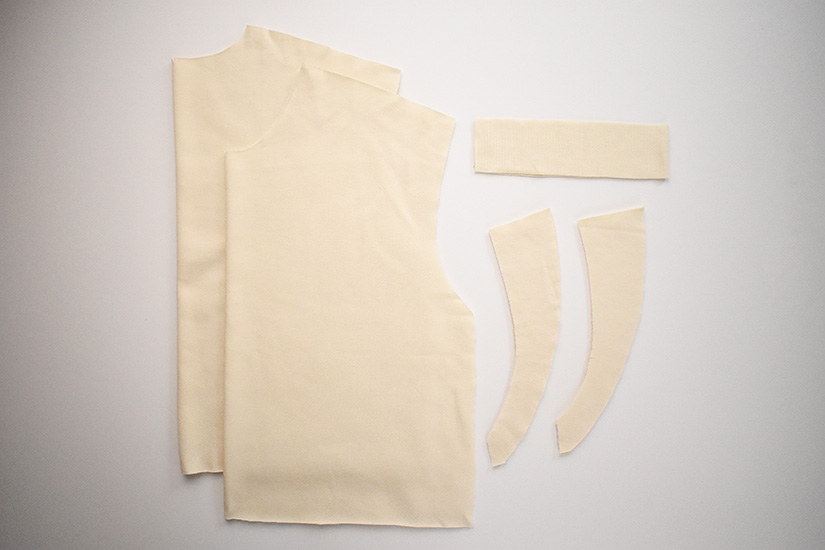
MAIN CUT LIST
- #1 OR #2 FRONT BODICE – CUT 1 ON FOLD
- #3 BACK BODICE – CUT 1 ON FOLD
- #4 OR #5 FRONT ARMHOLE FACING – CUT 2
- #6 BACK ARMHOLE FACING – CUT 2
RIBBING CUT LIST
If sewing the rib neckband, your pattern piece requires 75%-100% stretch and 90% recovery. Your main fabric can be used if it meets the stretch and recovery requirements.
- #12 RIB NECKBAND – CUT 1
OPTIONAL FUSIBLE CUT LIST
Using Tricot Fusible Interfacing on the armhole facing pattern pieces can accentuate the shoulder shape and works best on a stable knit.
- #4 OR #5 FRONT ARMHOLE FACING – CUT 2
- 6 BACK ARMHOLE FACING – CUT 2
VIEW C TOP WITH MOCK NECKBAND
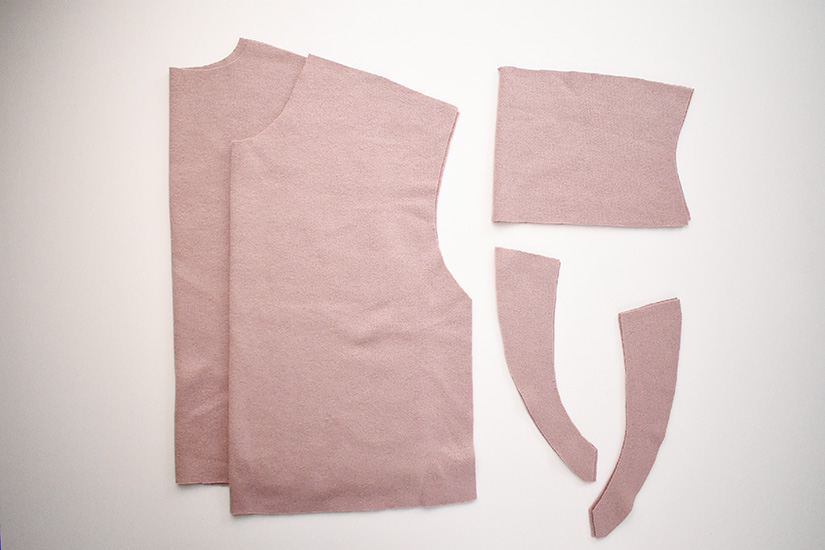
MAIN CUT LIST
- #1 OR #2 FRONT BODICE – CUT 1 ON FOLD
- #3 BACK BODICE – CUT 1 ON FOLD
- #4 OR #5 FRONT ARMHOLE FACING – CUT 2
- #6 BACK ARMHOLE FACING – CUT 2
- #9 OR #10 FRONT HEM FACING – CUT 1 ON FOLD
- #11 BACK HEM FACING – CUT 1 ON FOLD
- 13 MOCK NECKBAND – CUT 1 ON FOLD
OPTIONAL FUSIBLE CUT LIST
Using Tricot Fusible Interfacing on the armhole facing pattern pieces can accentuate the shoulder shape and works best on a stable knit.
- #4 OR #5 FRONT ARMHOLE FACING – CUT 2
- 6 BACK ARMHOLE FACING – CUT 2
TIPS FOR SEWING KNITS
- You do not need an overlock machine to sew knits; you can use your regular sewing machine. For sewing joined seams, set your machine to a narrow zig zag or a stretch stitch.
- For seams where you will not be utilizing the fabric stretch, you can also use a regular straight stitch.
- If you use an overlock machine, remember the joining seams have a 3/8” (1 cm) seam allowance, and trim the correct amount.
- When hemming you can use a twin needle, a narrow zig zag stitch, a stretch stitch, or a coverstitch.
- If you find that your fabric stretches while sewing, try a walking foot.
- If you are having trouble keeping your hems flat, you can try fusible hem tape.
Max Tee Sew Along Posts: Getting Started | Sew Shoulder Seams, Side Seams, and Armhole Facings | Sew the Neckbands and Neck Facings | Sew the Hem and Hem Facing

